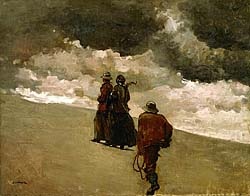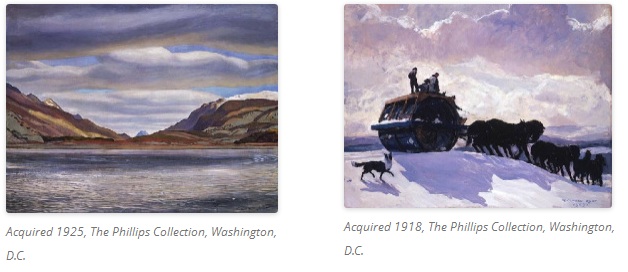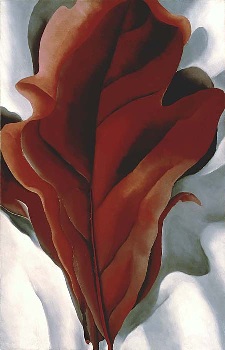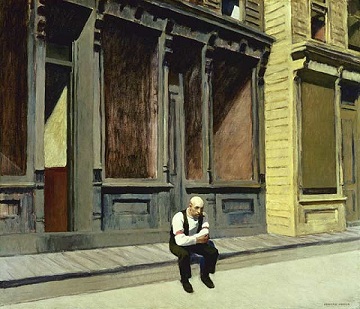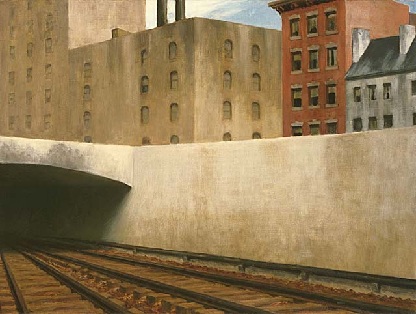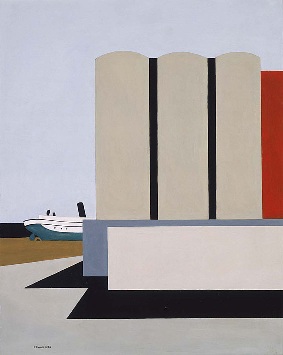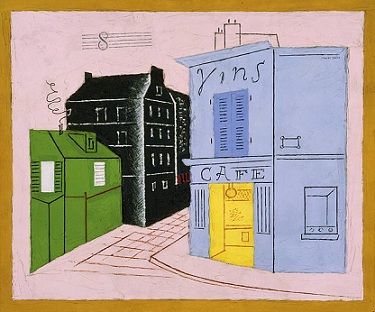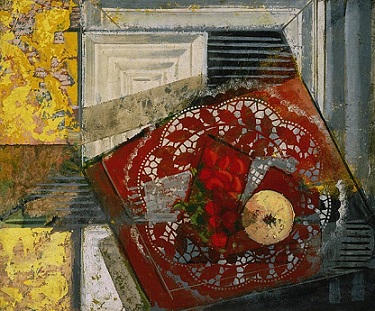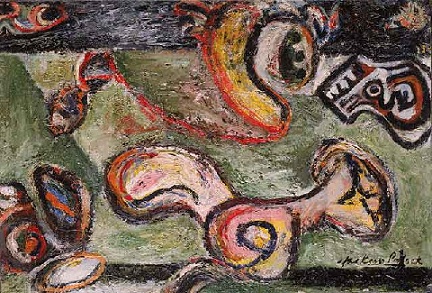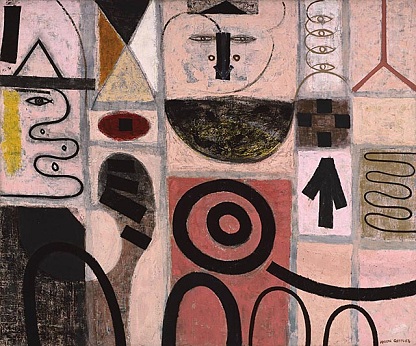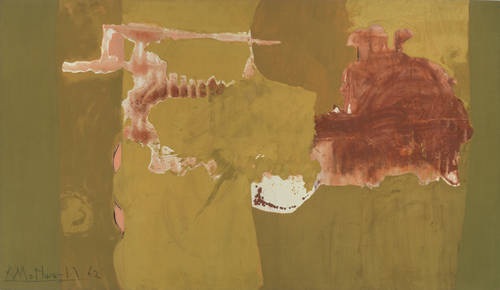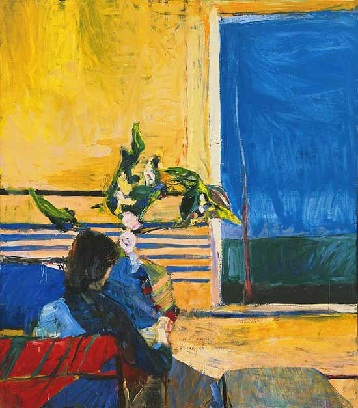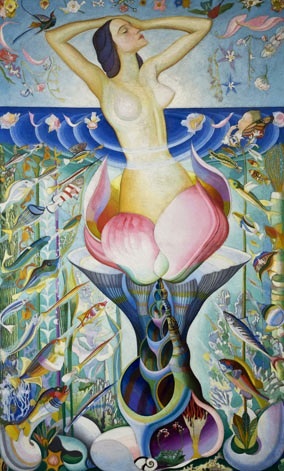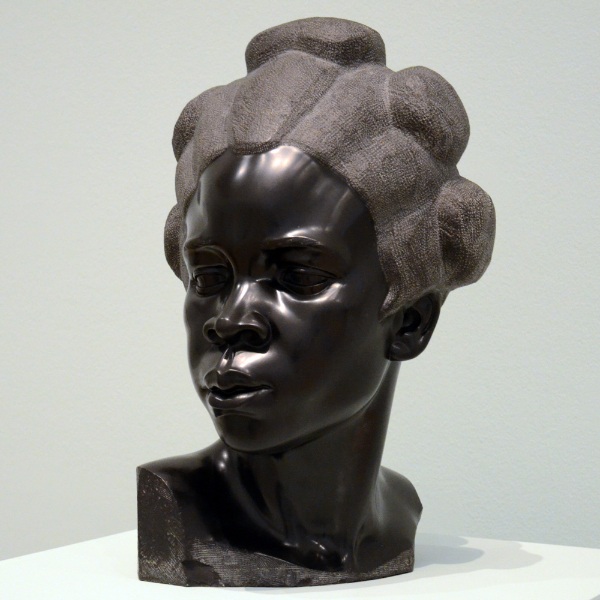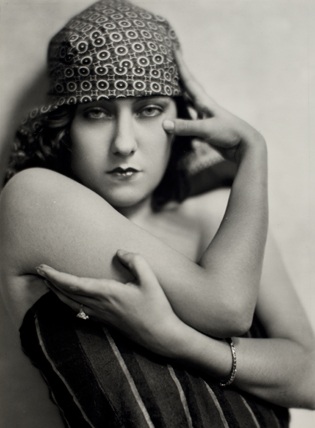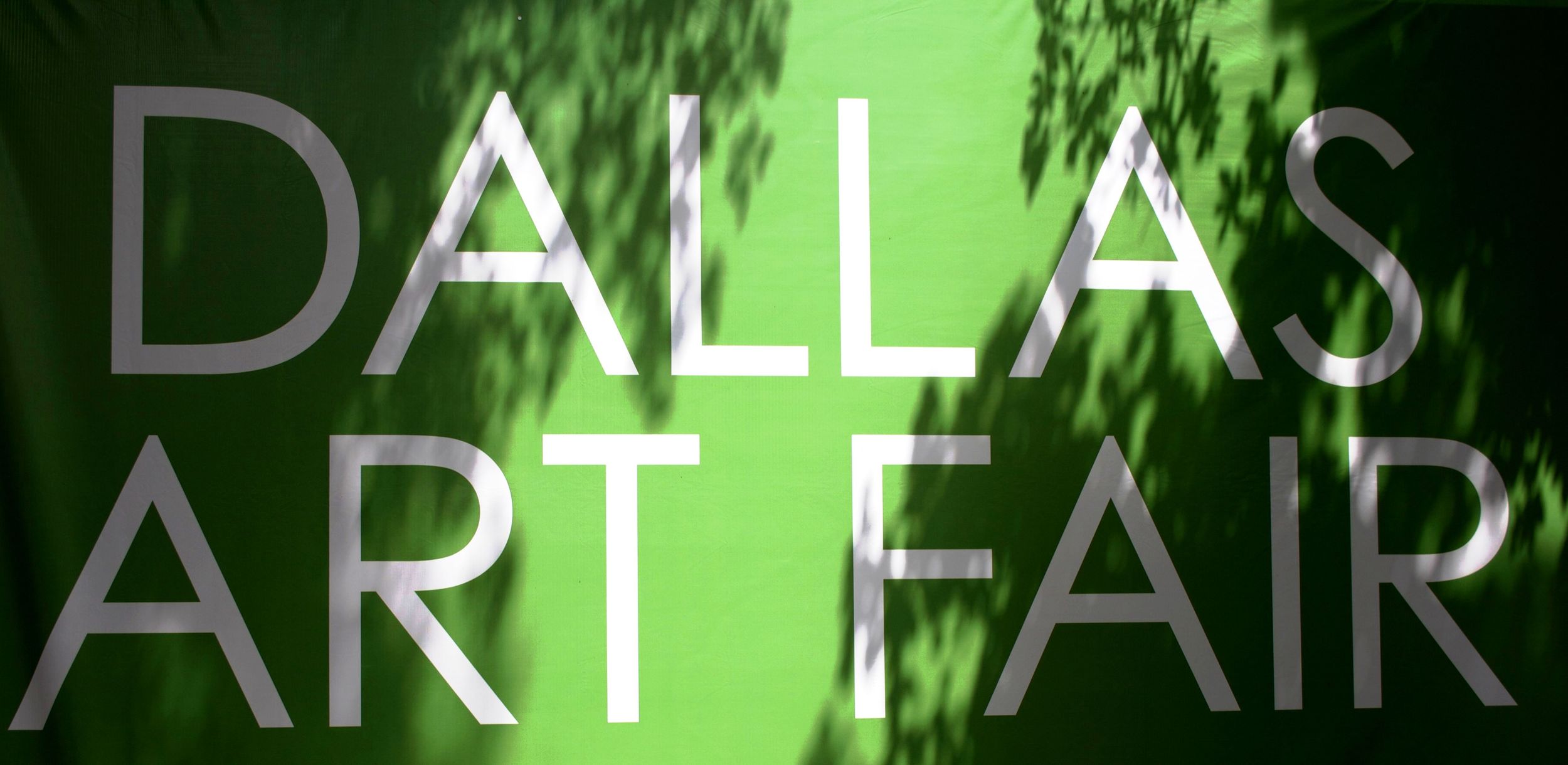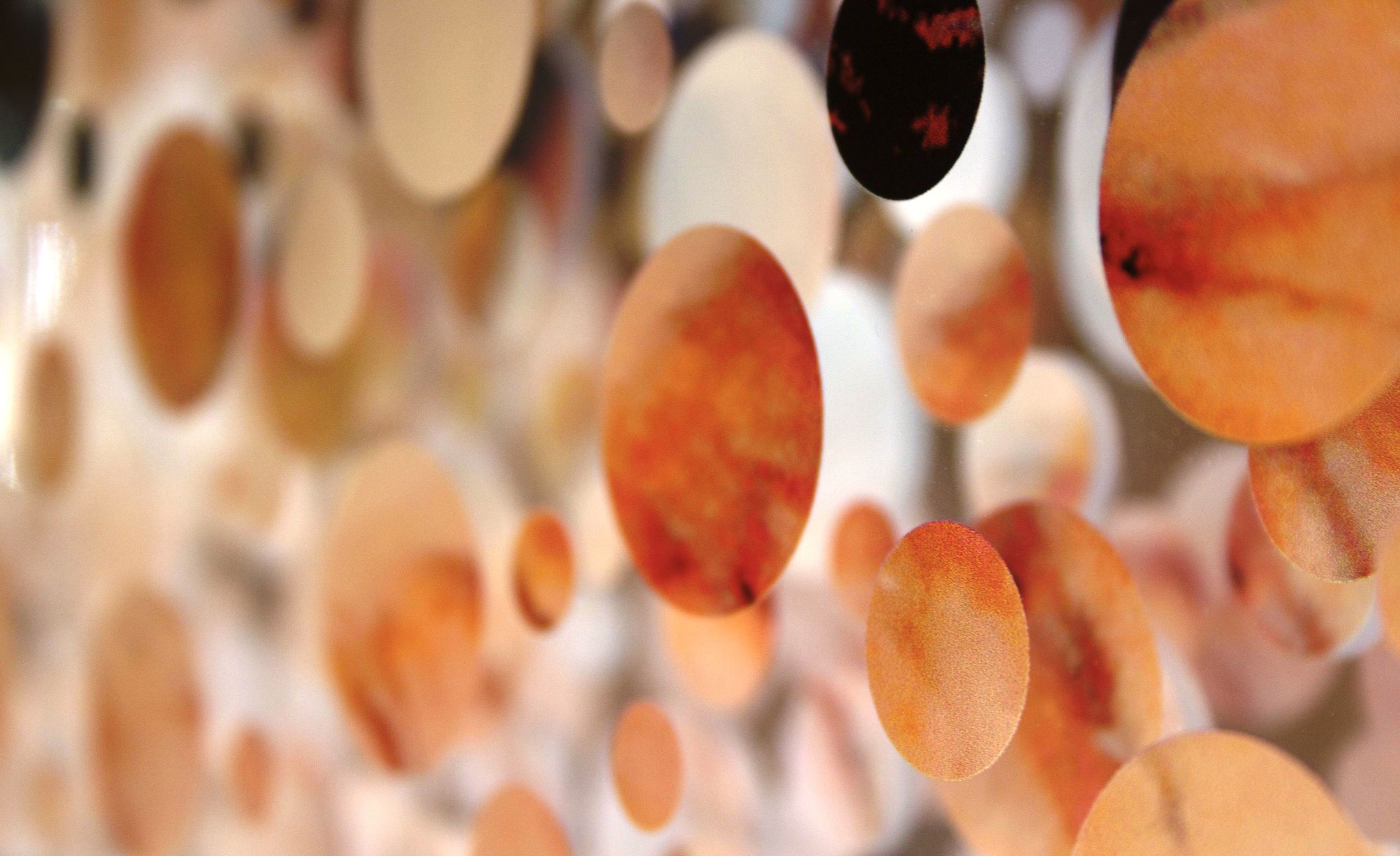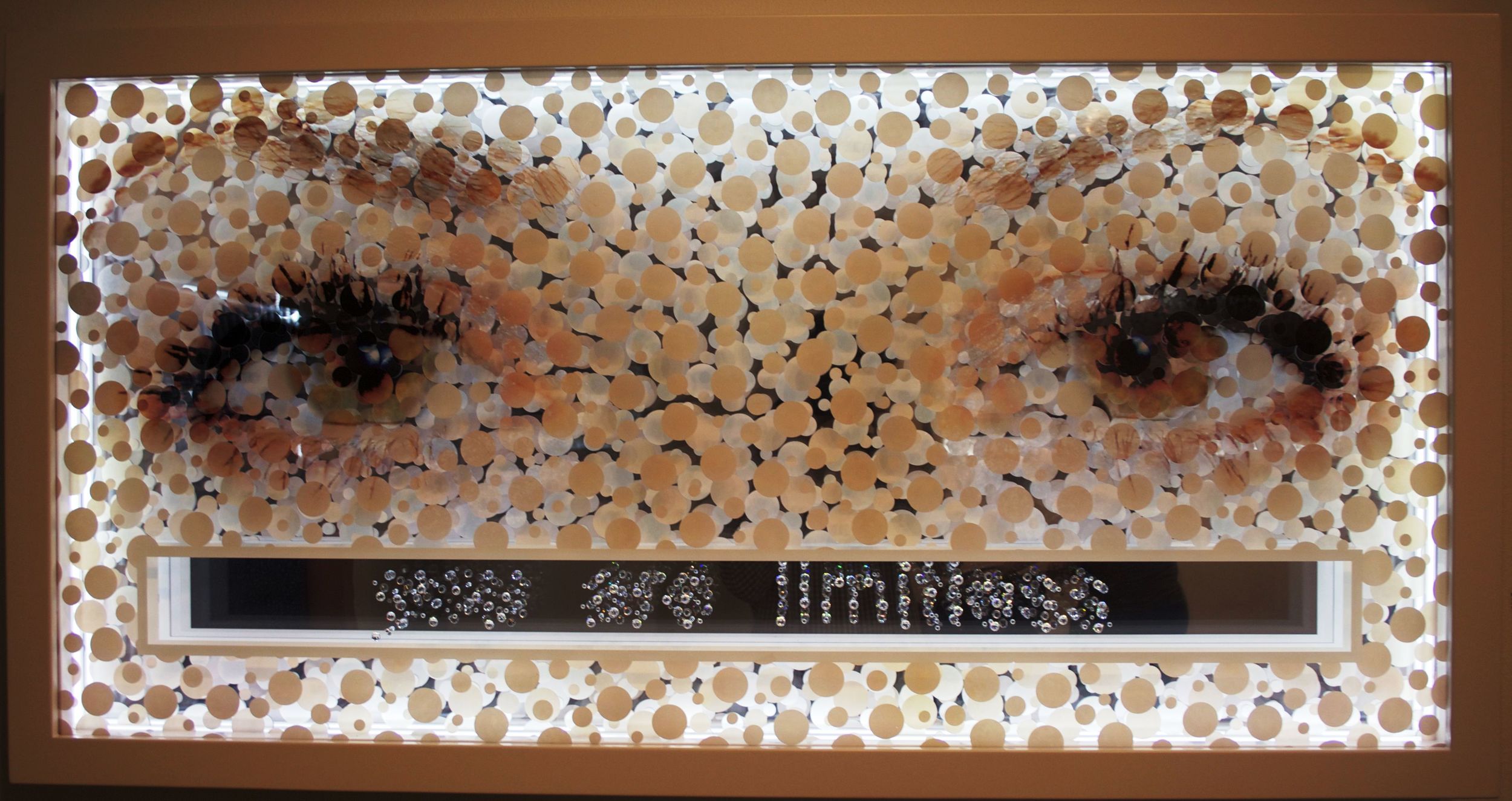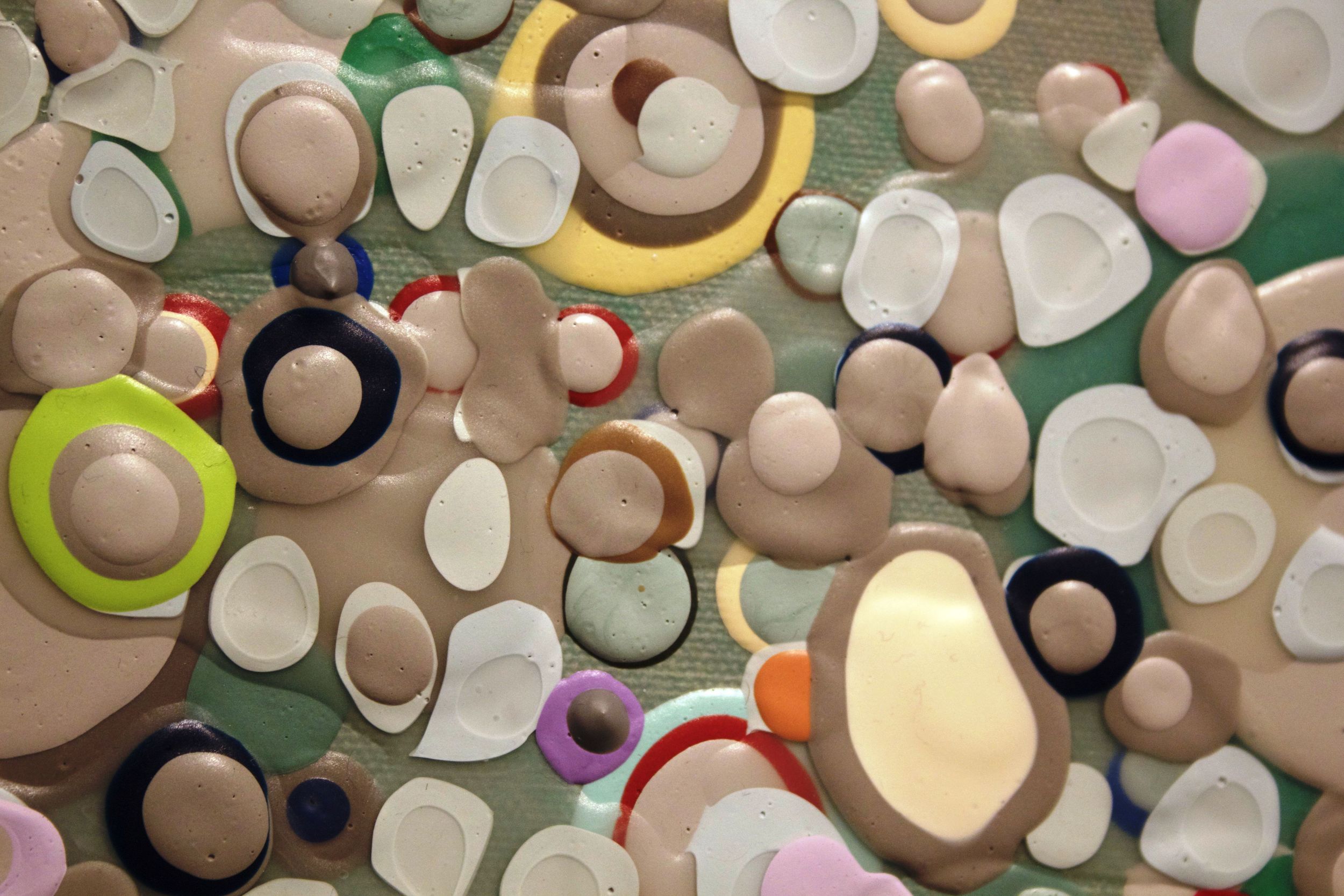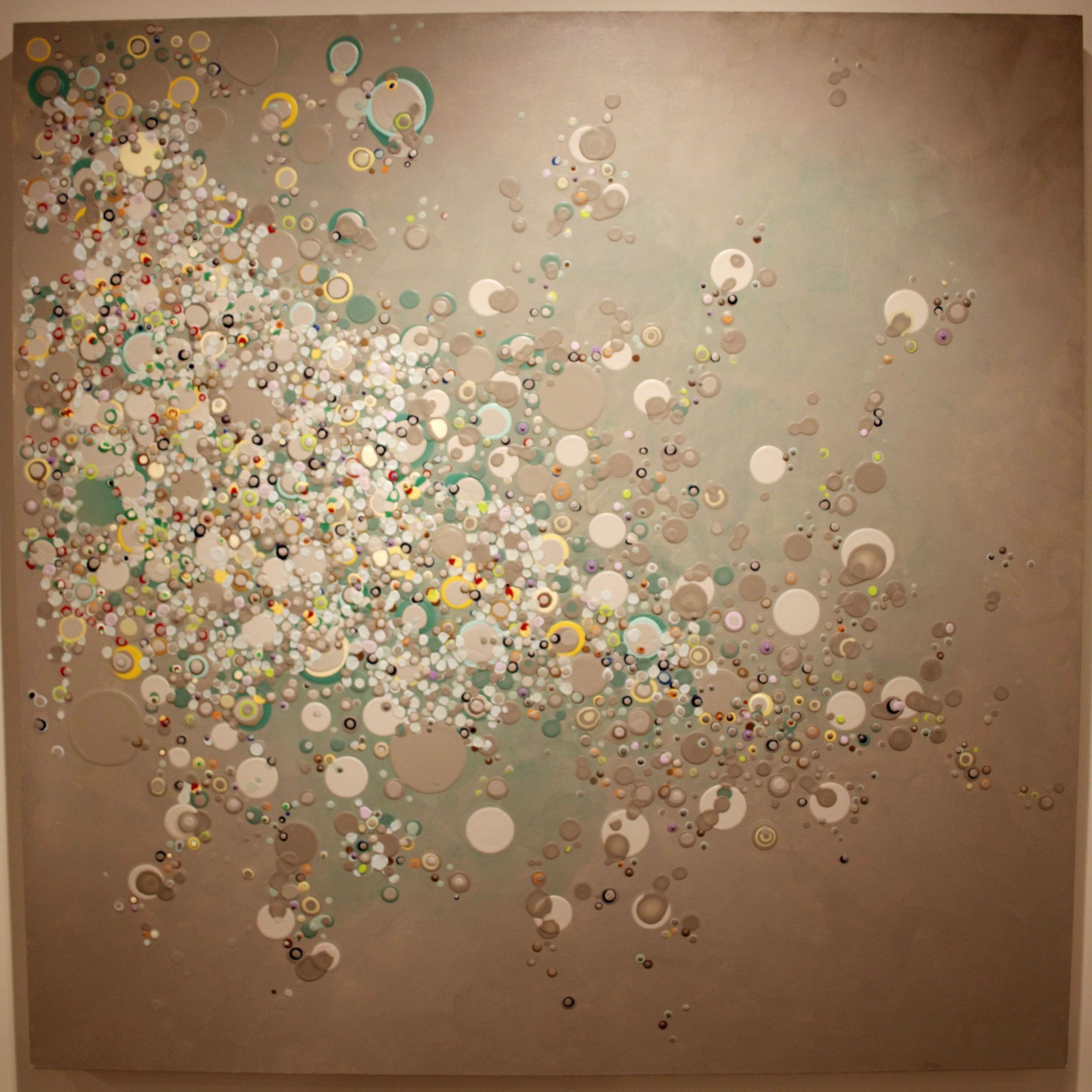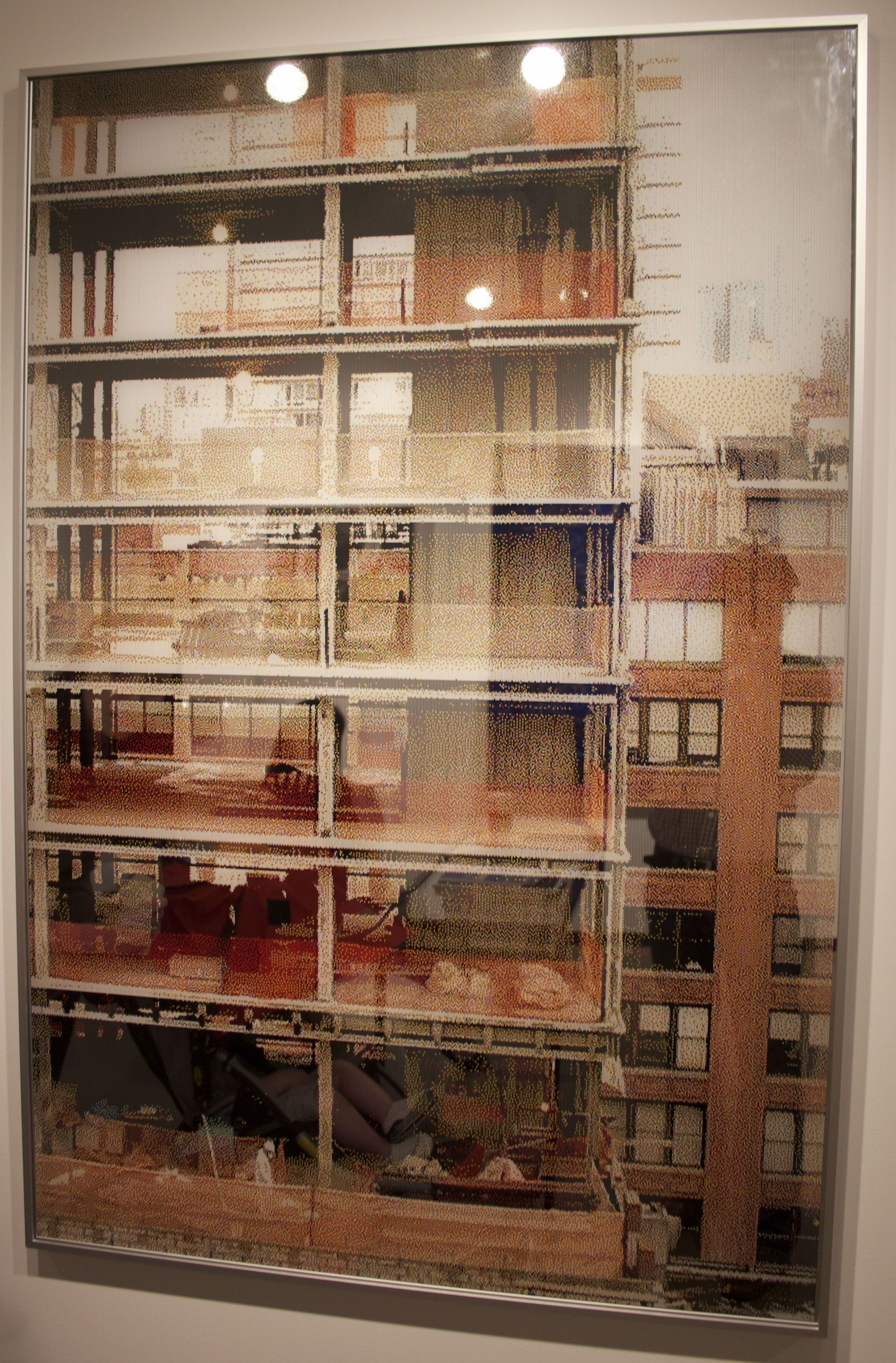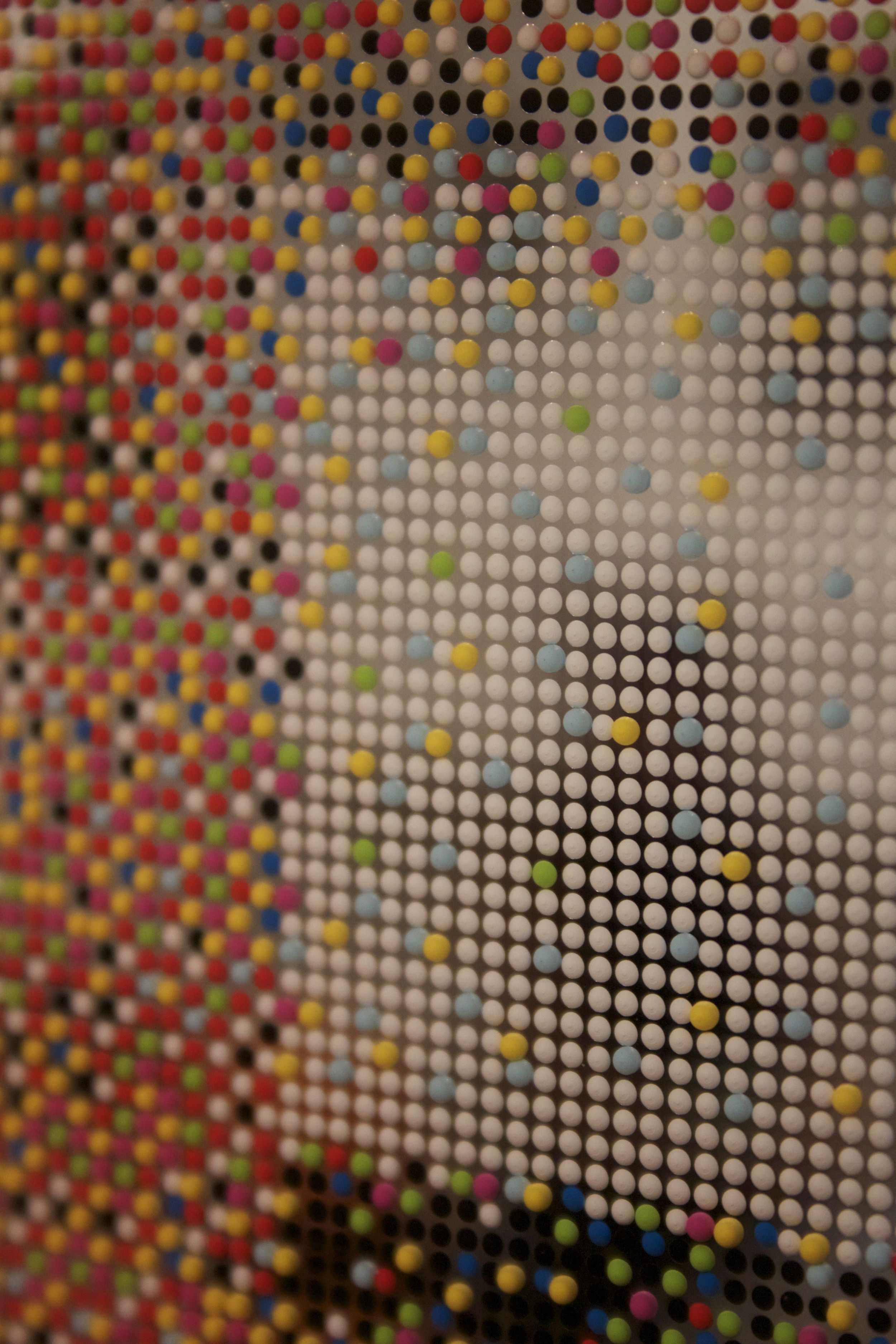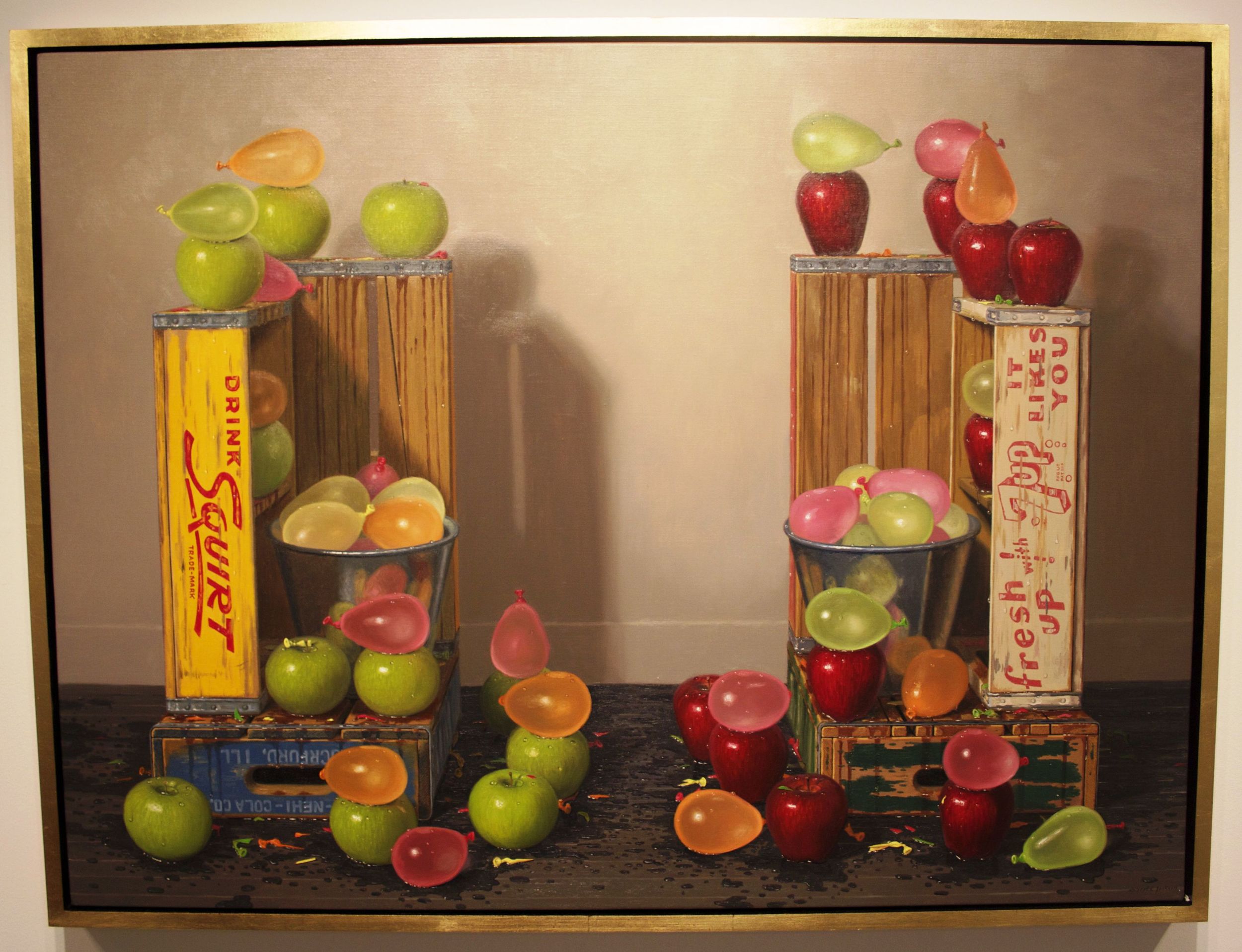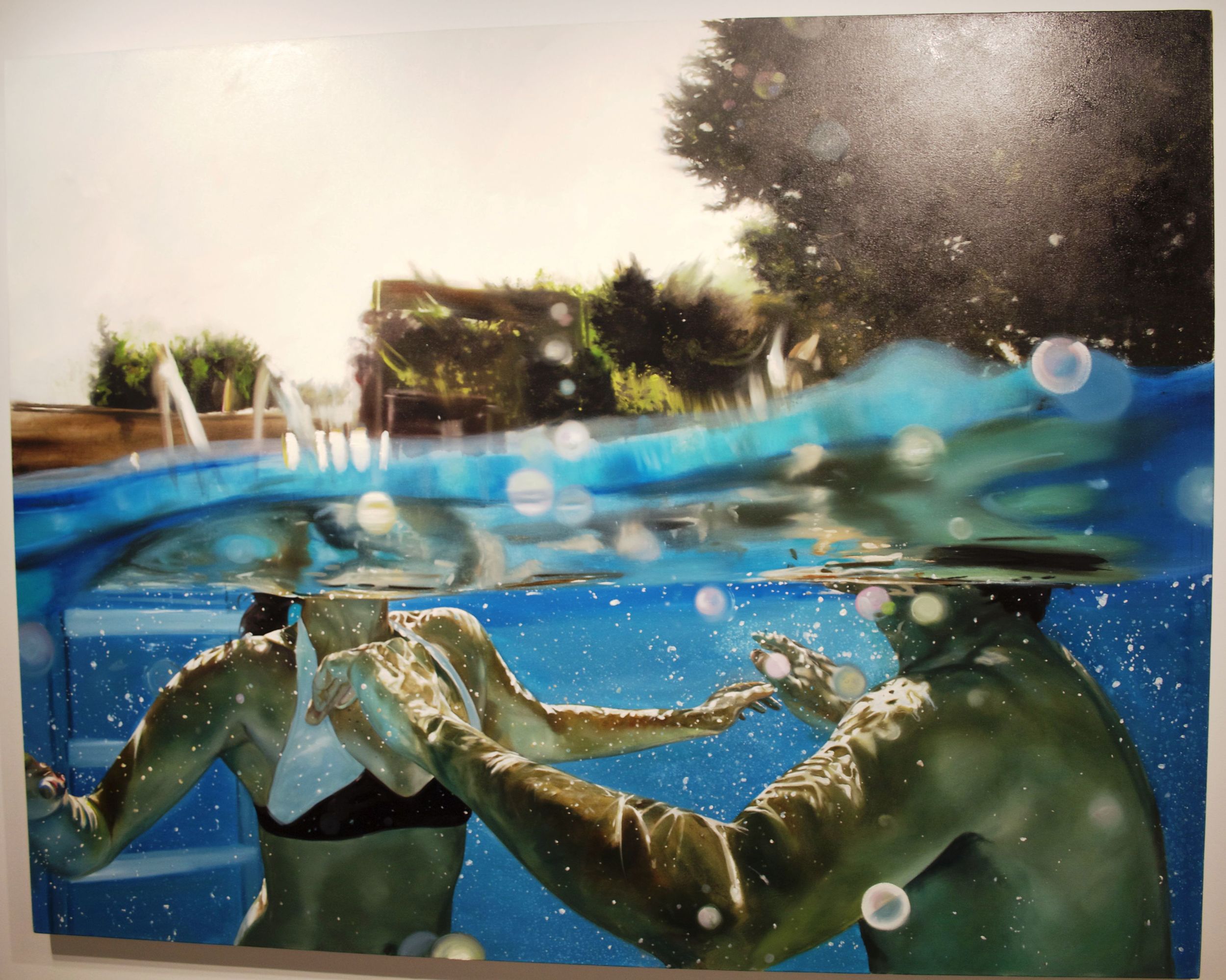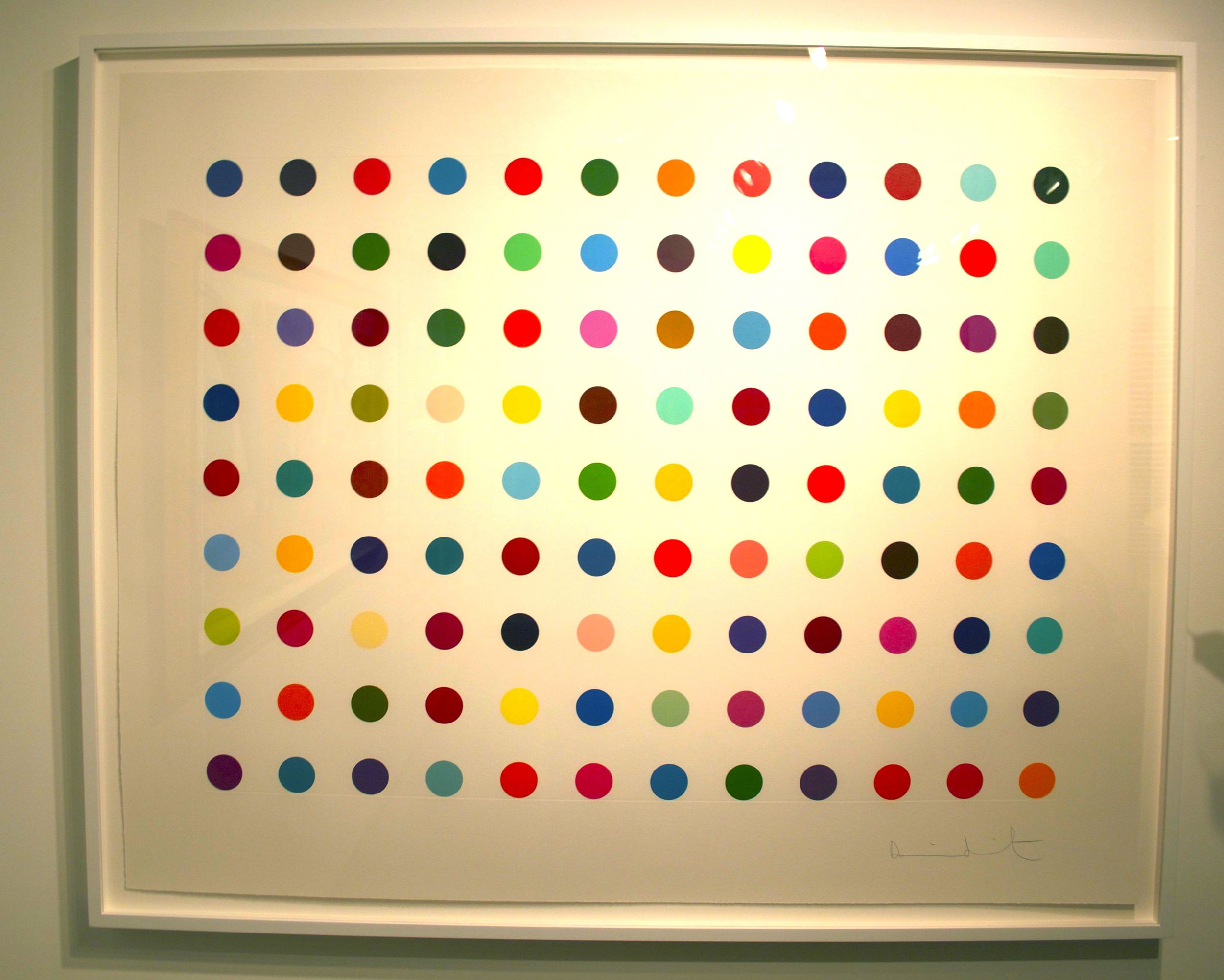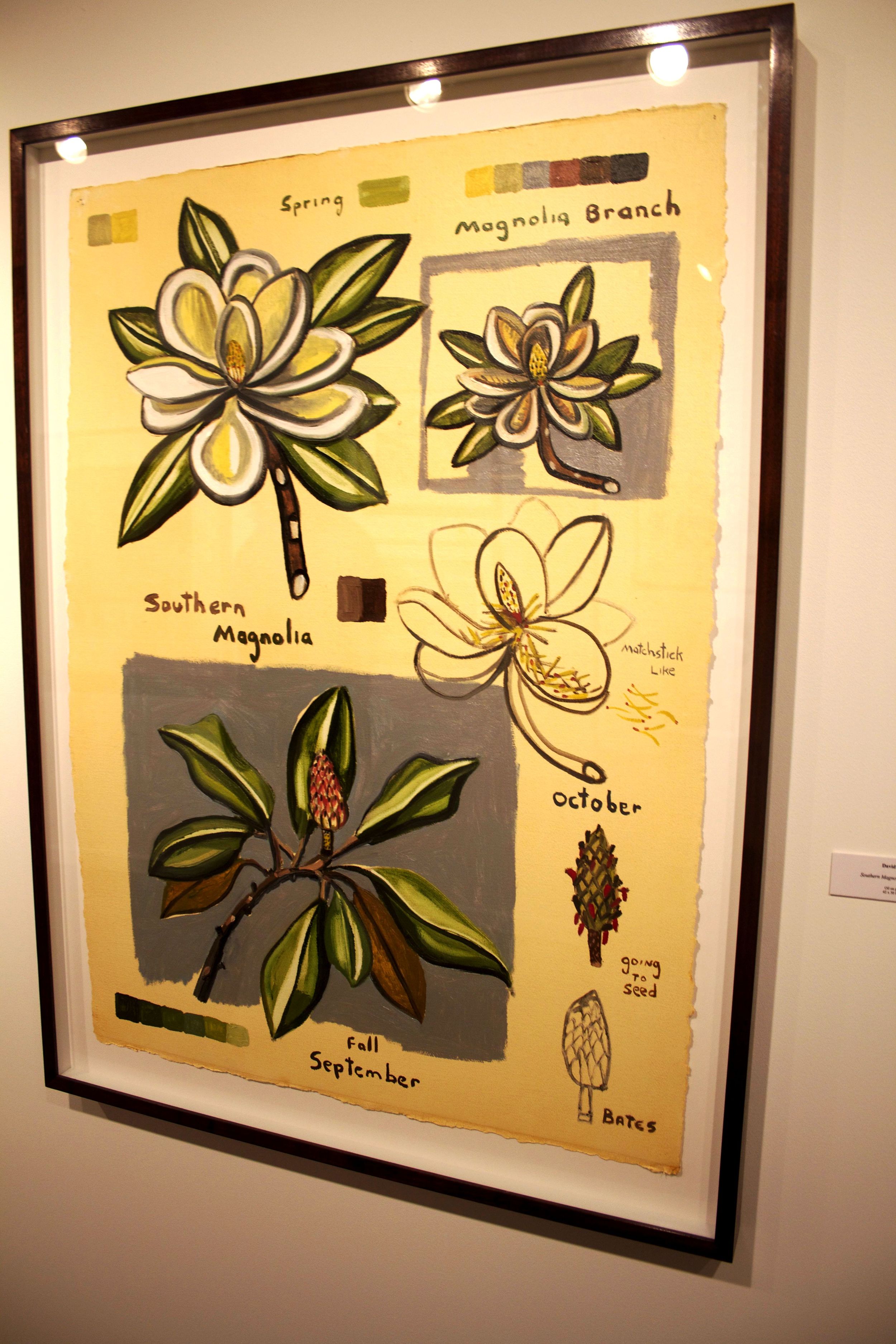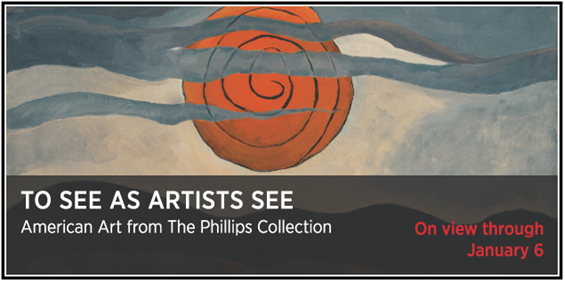 The current exhibition at the Amon Carter Museum, “To See As Artists See, American Art from The Phillips Collection” is one of the best shows to come to Texas this year. With over 100 fantastic works of American art, the exhibition investigates the progress of modern art in the United States from 1850 through the 1960’s. Divided into ten sections the spectator is taken through a showcase of exceptional works from artists who, as the Amon aptly put it, “found their own voices and created deeply personal work born out of the great traditions of the past.”
The current exhibition at the Amon Carter Museum, “To See As Artists See, American Art from The Phillips Collection” is one of the best shows to come to Texas this year. With over 100 fantastic works of American art, the exhibition investigates the progress of modern art in the United States from 1850 through the 1960’s. Divided into ten sections the spectator is taken through a showcase of exceptional works from artists who, as the Amon aptly put it, “found their own voices and created deeply personal work born out of the great traditions of the past.”
Duncan Phillips, whose father was a Pittsburg businessman and grandfather was co-founder of Jones and Laughlin steelworks, graduated from Yale in 1908 along with his brother, Jim, with whom he was very close. The two brothers shared a love for the art world and collected together for many years, eventually they were even given a collecting allowance from their parents. Duncan studied and wrote about art, publishing his first book, "The Enchantment of Art", in 1914. The death of his father in 1917 and Jim's death from influenza in 1918, shocked and overwhelmed Duncan. As a response to the family's loss Duncan and his mother founded The Phillips Collection in Washington, D.C. in 1918, originally called The Phillips Memorial Art Gallery, and in 1921 opened it to the public, effectively making it the first museum of modern art in America.
"To See as Artists See," is the first international touring exhibition by The Phillips Collection to showcase the museum's distinguished collection of prominent American works. Amon G. Carter Sr., like Phillips, was a passionate collector. This is evidenced through the many canvases and bronzes within the walls of the Amon that express Carter's enthusiasm for American art, particularly art of the American West. There is no better museum to exhibit these extraordinary works from the Phillips Collection than the Amon Carter, a museum devoted soley to American Art, and this outstanding collection of our nation’s art history is here through January.
Beginning with the section titled “Romanticism and Realism”, the exhibition presents the viewer with realistic, moving landscapes and narrative scenes by artists such as George Innes and Thomas Eakins. This sets the tone for the timeline-driven show as the 18th century American artists melded realism with the romantic in the years following the Civil War. As a progression away from the everyday scenes of common American genre painting, working artists in the states sought to portray another level within their work that gave insight to man’s interaction with nature. Instead of intense realism that distinguished landscape painting historically, the movement set out to impact the individual by expressing a new vision which targeted emotion and the thought process of the viewer.
Winslow Homer’s oil on canvas “To the Rescue,” executed in 1886, is a great example on display in this section as the work gives sparse narrative and direction, avoiding the painting’s unseen subject of a shipwreck rescue mission and, instead, focuses on three figures hurrying to the scene of the tragedy. There is an intense drama and urgency of the event expressed only by the troubled movement of a man in the lower foreground as he approaches two women along a stretch of beach. The canvas is rendered with a limited color scheme of tonal values and is concerned with sketchy and simplified aesthetics meant more to evoke and impact the viewer rather than tell a story. In a later painting, Homer returns to this shipwreck subject and gives the figures on the beach context; the tragic accident is displayed for the viewer.
In the second section “Impressionism” American art collides with the French impressionist style. This new analysis of the city and countryside brought forth bright depictions of relaxing scenes and cityscapes that were the favorite subject matter of artists like Childe Hassam and John Henry Twachtman. With a light color pallete and quick brushstrokes to give a sense of reflection and atmosphere, American artists with training from the art academies of Europe transformed French impressionism into a decidedly American movement.
Maurice Prendergast's 1917 oil on canvas, "Fantasy," with thick brushstrokes and splotches of color, presents the viewer with a space of imagination as a crowd of faceless people gather in a forested landscape near a bay with a singular moored sailboat. Prendergast's approach to the canvas with subdued colors and intricate patterns that run along the surface has great allure, pulling the viewer in, inviting the viewer to investigate the arrangement of dots and patches of varied hues that enliven the quiet, leisurely composition.
In the section "Forces of Nature" with works by John Martin, Marsden Hartley and Harold Weston, the audience is given warm depictions and a soft visual language of the landscape as the artists found an escape from the everyday civilization where they sought to experience the intensity of nature, particularly in the landscapes and climate of northern New England. The American landscape painters after the turn of the century were dissatisfied, or even bored, with Impressionism’s focus on the intimate landscape views rendered in soft, bright tones. Instead they chose to depict the modernist impulse.
Two works by Rockwell Kent stood out in this section, "The Road Roller" and "Azopardo River." In "The Road Roller," a drama builds between the artist's fluid brushstroke and thick impasto as he depicts a crew from the Dublin Township packing down the snow of his driveway. With long shadows reaching out across the snow towards the viewer and thick clouds crowding the sky, there is more happening than snow being packed for ease of travel. There is a boldness which transcends the scene.
"Azopardo River" is a view across the undulating waters of the Azopardo River in Isla Grande de Tierra del Fuego, Chile at the southern tip of South America that displays rocky mountains beneath a blue and clouded sky.
These two pieces by Kent have great, intentional conversation as they are situated very close to one another within the exhibition. They communicate and correspond, at times in agreement with one another as they work together with a similar overall color scheme of white, blues and grays and a drama obtained through shadow and scale. Conversely, they disagree and compete as the Azopardo landscape is serene and calm, almost overwhelmingly still. It has browns, reds, oranges and pastel greens that smooth over a range of mountains retreating into the distance. The river encompasses the foreground and is tranquil with subtle ripples and small waves spreading across its surface as it sits under soft white clouds. "Azopardo River" has a warmth, while "The Road Roller" is sharp and has a biting cold with silhouetted horses toiling at the reigns of men oblivious to the viewer.
This section transitions into "Nature and Abstraction". The 20th century American artists in this section sought to deconstruct nature in such a way to obtain a connection, to portray a sensory experience that would evoke a personal response with the viewer. Works like Georgia O'Keefe's "Ranchos Church" and Arthur Dove's "Morning Sun" explore the notion that the natural world's emotional impact and spiritual 'feel' could be rendered and communicated through color, line and form without the crutch of representationalism.
O'Keefe's oil on canvas "Large Dark Red Leaves on White" (1925) depicts red leaves that are magnified and slightly cropped to fill the canvas. By limiting the viewer’s focus to the form of one leaf and enlarging that to fill the image, O’Keefe takes us away from our pre-conceived notions of landscape and forces us to focus on just the folds and turns of one leaf. This allows us to see the sensual beauty of the individual. This work is a glimpse of the dramatic and sexually-charged paintings O'Keefe is best known for. She uses abstraction as a way to express intense emotion by transforming the lines and colors of the objective form, the red leaves, into an abstract composition. The bright white tones and silver hues of the background contrast with the dark reds of the main leaf, creating an unclear sense of space. O'Keefe's paintings exemplify the expressive symbolism artists wrestled with as they continued to define American modernity.
American Impressionists avoided depictions of the urbanization that occurred at the end of the 19th century. As industry and the rise of the modern city challenged the identity of the nation that was established and time-honored as an agrarian society, artists like Walt Kuhn, Edward Hopper and Robert Henri combated the mannerly social world of uptown New York. Instead they set out to depict subjects of everyday life in the working-class, they wanted to show the grit. These urban realists were coined the "Ashcan School" due to the subjects they painted - poor neighborhoods, fortune tellers, slum dwellers, alleyways and the like.
At the end of World War I, the city had become a powerful symbol for America. Skyscrapers shot up into the skyline, bridges reached across rivers and the new construction and energy of urban America stood firm as a sign of the nation's growth. With culture embracing advanced technology and engineering, the city began to replace the countryside and artists began to explore America's industrial landscape. Edward Hopper, John Sloan, Charles Sheeler and others approached the city as something alive, an entity with a thriving pulse of its own.
In the sections "Modern Life" and "The City", the works of Edward Hopper and Ralston Crawford encapsulate this period in American Art. The works "Sunday" and "Approaching the City" by Hopper are sharp and tough; they are truthful. The artist gives you the essentials of the scene.
In "Sunday" a solitary man sits on a sun-washed curb completely oblivious to the viewer. It is a flat portrayal with no drama, no energy. The audience is in question, What is the man waiting for? Who is he? Does he own one of the shops? Is business closed on Sunday? The 29 x 34" oil on canvas has the smooth, solitary feel characteristic of Hopper's mature style. It is a blend of pleasure and depression.
"Approaching the City" is an almost stoic moment of the commonplace. It shows a wide angle view of train tracks and an underpass. A thick concrete wall runs parallel with the tracks and separates the foreground from apartment buildings in the distance, lending a sense of isolation.
In this modern city, Hopper has used a dull color scheme. As with "Sunday", there are no bursts of color to illicit excitement or convey energy. Instead, tan, sanguine, gray and white are used to create a space of curiosity and uncertainty. Amongst all the buildings in the background filled with windows, there is not a soul in sight. "Approaching a City" is Hopper painting the loneliness of the modern city, he is commenting on the sense of being on our own in the world, being on our own in the human condition. It is the vantage point of the stranger.
It posits the question of the railroad's role in contemporary life. The railroad made travel possible and shrunk the world, it made distant destinations accessible to the commoner, but it also made those places less distinctive.
Ralston Crawford's 20 x 16" oil on canvas "Boat and Grain Elevators, No. 2" idealized the industrial landscape. It is a view of three grain elevators side by side with a merchant steamer in the background. The work is very two-dimensional. Crawford has simplified most of the elements in the painting down to wide, clean geometric blocks of color. This flat handling of both architecture and nature continued to progress throughout the artists career, his later works grew fragmented and disorganized. Like the works of Hopper, there is a connection with the viewer, a commentary happening, but it is not dramatic or of passion. It is stagnant and anonymous.
The “Memory and Identity” section of the show explores America in the early part of the 20th century as it began to acknowledge and celebrate the cultural differences of various regions and ethnicities. The great northward migration of African-Americans seeking work after the Civil War created large urban black populations in a few northeastern cities such as New York and Chicago. This was the era of the Harlem Renaissance in New York City. This show includes paintings by Horace Pippin and Jacob Lawrence which explore the day-to-day lives of their own African-American communities. These artists dealt head-on with the complexities, hardships and joys of life in their communities. Jacob Lawrence’s tempera painting series “The Great Migration” was an intensely personal subject for Lawrence as his own family migrated from North Carolina, through Virginia, to New York City. The works in this series are dynamic and angular, flattened and graphic in keeping with a more modern approach to figure painting. The figures in Lawrence’s paintings are less representations of individuals than depictions of the struggles of the collective, the “every-man.” The show also includes paintings by Grandma Moses, the self-taught regionalist artist who felt compelled to do paintings of her life in rural America. This is a view of rural, white America that stands in direct contrast to the depictions of urban black America hanging in the same room. The Phillips viewed these pieces as essential reflections of the country’s growth and ethnic diversity.
The famous Armory Show came to New York in 1913 and introduced American audiences to the cubist works of Pablo Picasso, Georges Braque and Marcel Duchamp and other European artists for the first time. While many critics ridiculed cubism, a group of American artists were gripped by the elements of it and embraced the style. By the 1920's the multiple viewpoints, fractured forms, bold line and flattened spaces that exemplified cubism began to surface in the works of numerous American artists.
These American modernists, such as John Graham, Karl Knaths and Niles Spencer set out to interpret and personalize cubism by filtering it through a decidedly American lens. They integrated the elements of cubism into their own unique abstract styles. This can be clearly seen in the landscape depictions by Stuart Davis. The 18 x 21" oil on canvas "Blue Cafe" is rendered in flat simplicity with bright, vibrant colors. The streets are flattened and the buildings are reduced into geometric blocks within the two-dimensional plane. Even the puffs of smoke exiting a chimney are reduced to stiff squiggly lines.
As Davis took the cubist approach to the landscape, Alfred Maurer took it to the still life in his 17 x 21" oil on hardboard "Still life with Doily". This work, though dark and muddy with deep reds and browns, has a whimsical feel added by the detailed white doily. This is an American modernist embracing European modernism as he allows cubist influences to interpret his environment, in this case a still life with strawberries and an orange on a white doily.
The last two sections of the exhibition cover the 1940-50's move into abstraction. The abstract expressionist works held in the Phillips collection are some of the earliest glimpses into the visual language and avant-garde artistic activity that made New York the capital of the art world in the 1940s and 50s. Whether taken from the shapes within nature or the influences of the psyche, American artists pushed abstraction to obtain a language of unadulterated color and form. In the section "Transition to Abstract Expressionism" works by Jackson Pollock, Alexander Calder and Arthur Dove show the movement as is finds its bearing and begins to take shape. The early works by Pollock and Gottlieb show great insight to the viewer as they see the artists experimenting on the canvas.
The 17 x 25" oil on canvas "Composition" by Pollock is not one of the drip paintings for which he is best known for. It is a tangible display of Pollock transforming his previous figurative language into one comprised wholly of non-representational forms and gestures. He believed that emotion and abstraction were connected, and this belief fueled his progress to large scale action paintings.
Likewise, the massive 59 x 71" oil on canvas "The Seer" by Adolph Gottlieb is an early work for the artist. Gottlieb painted a large number of works utilizing cryptic symbols which resembled the pictograph writing of ancient cultures. This use of semiotics was his solution to show meaning through abstraction without referencing actual objects, moments in time or places.
In the final section, "Abstract Impressionism" the viewer encounters works by the big hitters of the movement; Robert Motherwell, Mark Rothko, Clyfford Still, Helen Frankenthaler and others. These works are presented as firm examples of the Abstract Expressionist movement by artists who solved, as they described it, the "crisis of subject matter". The search for subject matter led to the questioning of meaning. This led to an intense internal dialog as the abstract expressionists looked within and explored their psyches of inspiration to transfer to the canvas. Painting became a means of expressing emotions and ideas onto the canvas; to give feelings and thoughts tangibility.
Robert Motherwell's massive 82 x 141 oil on canvas "Chi Ama, Crede" shows for the viewer how the artist sought to create imagery which communicated emotional truths. The painting's imposing size contributes greatly to its emotional impact.
There is an early work by Richard Diebenkorn on display titled "Girl with Plant." This piece is from Diebenkorn's figurative period and gives the audience a preview of the later, and more well known works by the artist; the pieces from his Ocean Park Series. In the 80 x 69" oil on canvas, it really isn't a portrayal of a girl in a room with a plant. Instead, the sitter, who faces away from the spectator, is absorbed into the composition, she becomes a part of it. The space seems to be transitioning, slowly becoming more and more flat. On the right side of the canvas is an area dominated by three rectangles. This layering of simplified shape and blocks of color points to the artist's development of expression later seen in his Ocean Park pieces.
This last section also includes two Alexander Calder mobiles.
"To See as Artists See: American Art from The Phillips Collection" is a great opportunity to see highlights of the Phillips Collection while building is underway at the Washington, D.C. facility. The Amon Carter is one of only three U.S. museums that will be hosting the exhibition; the show has already been to Italy, Tokyo and Madrid. The show opened October 6th and will be running through January 6th of 2013.
Incredible show, great museum, absolutely free. You officially have no excuses.
-M.P.Callender Signet Art






